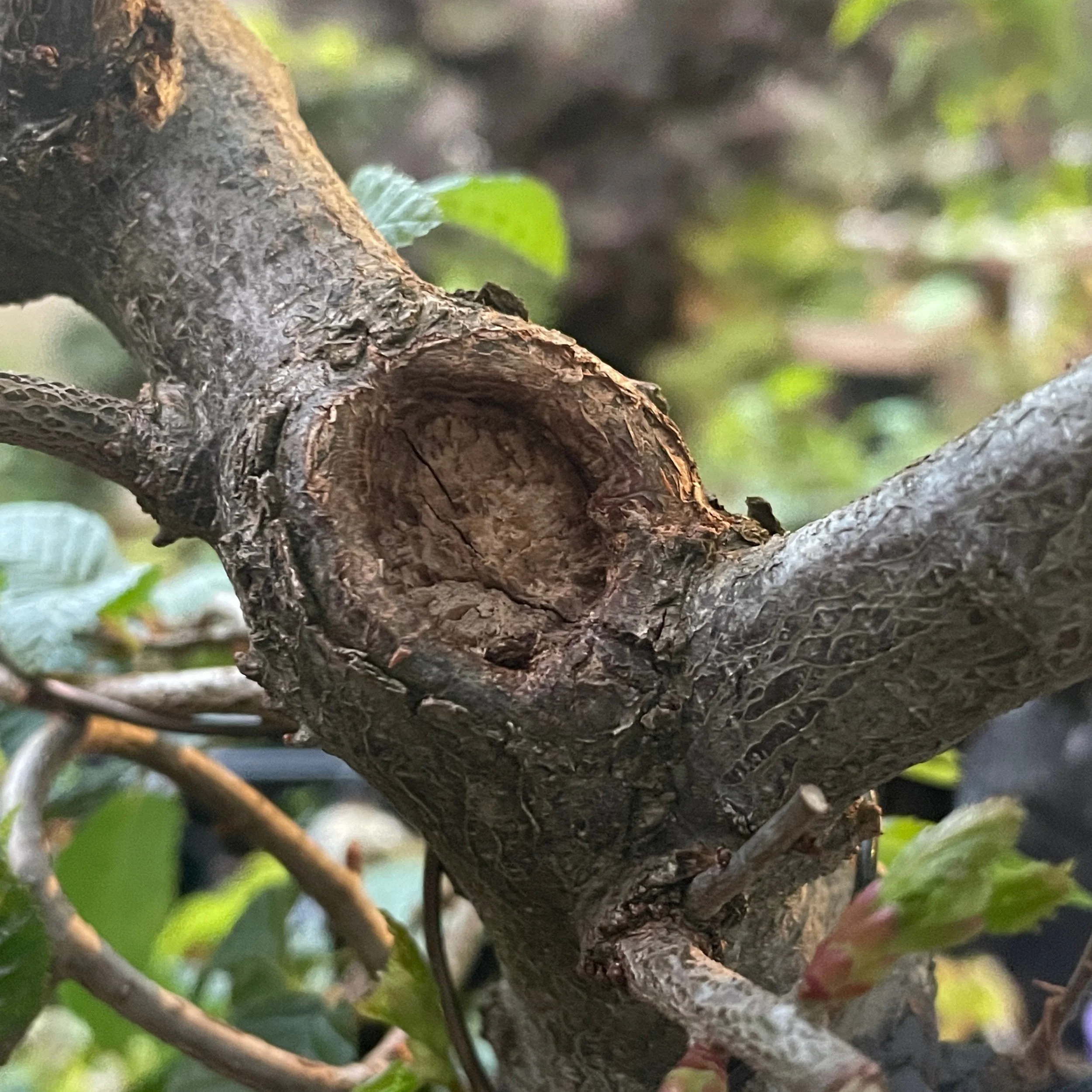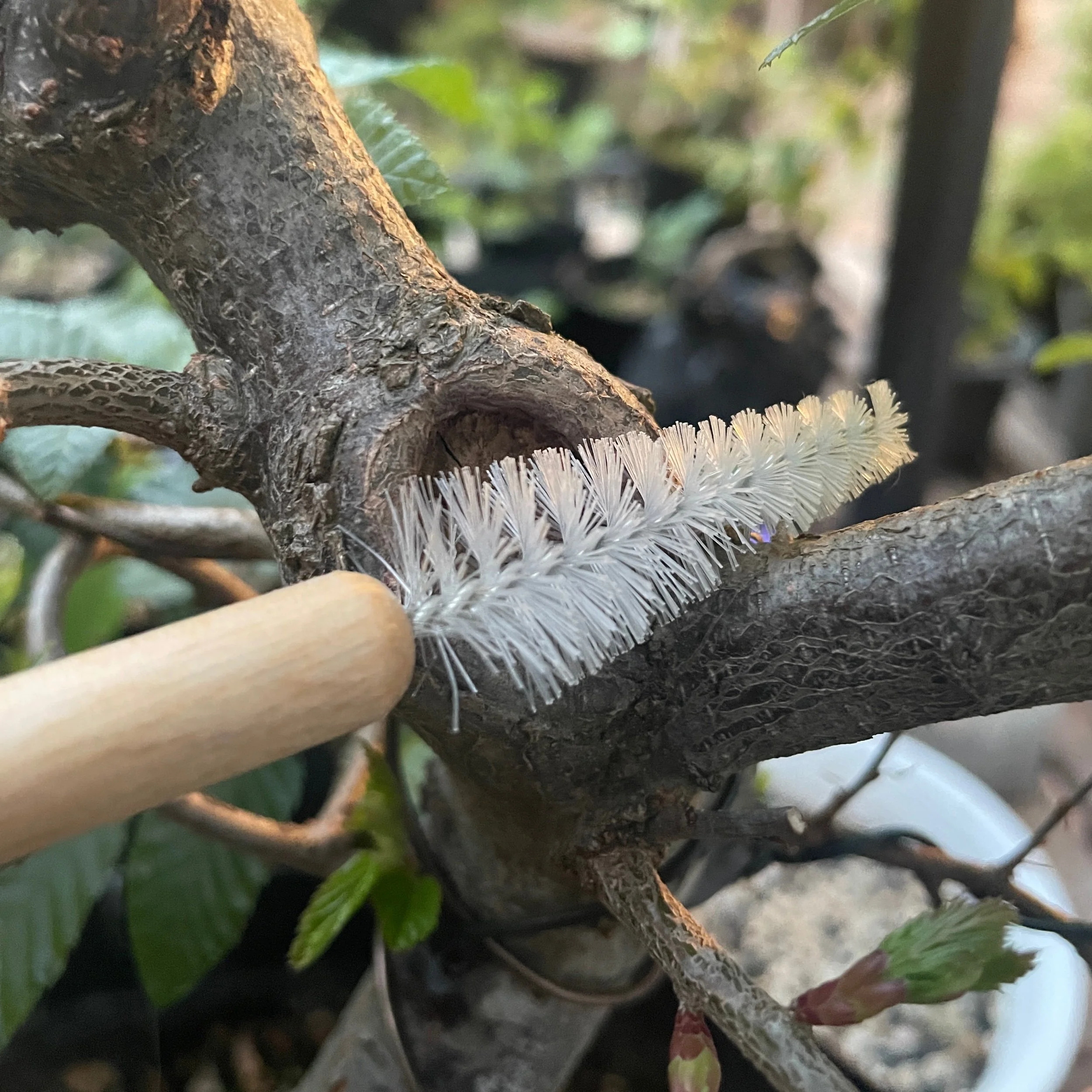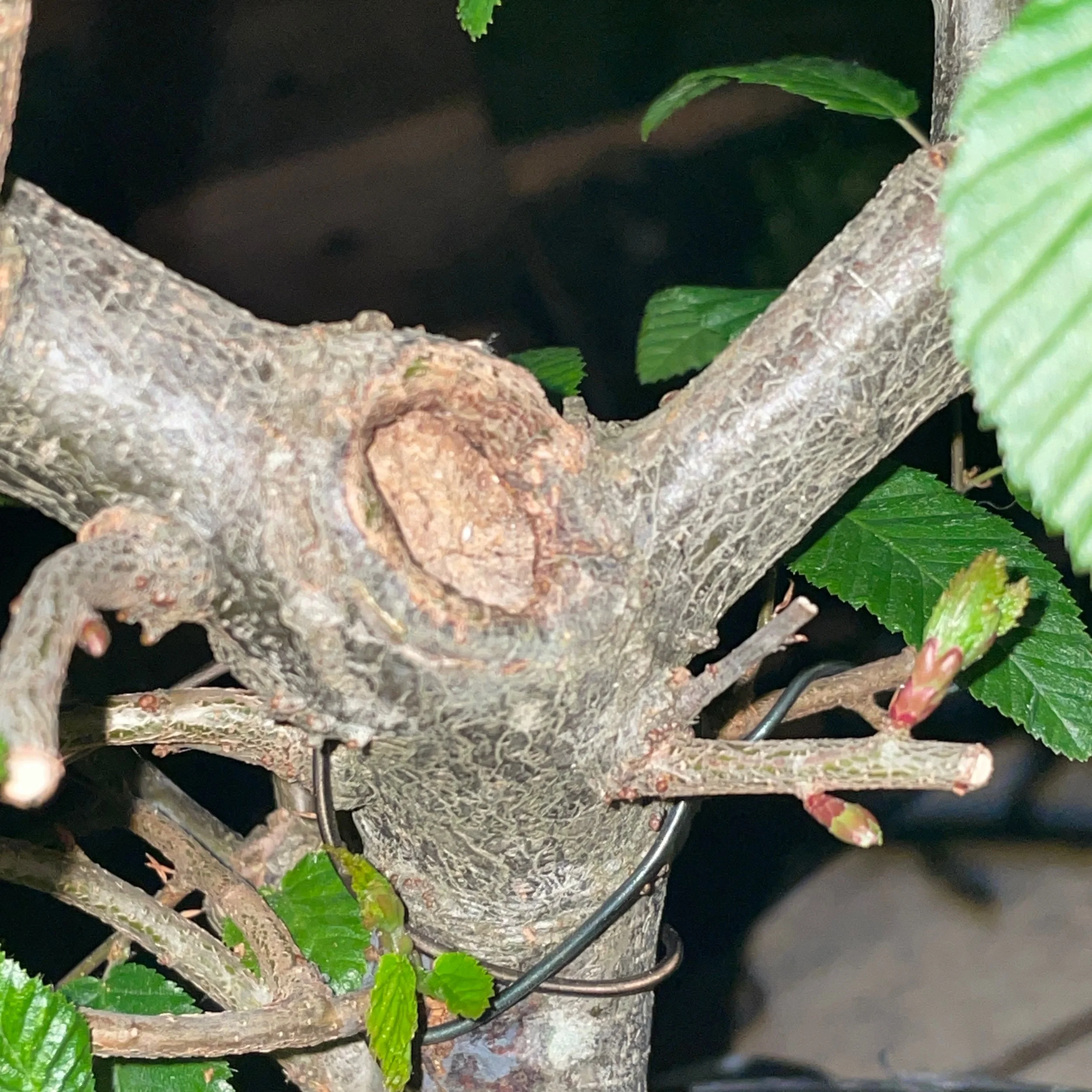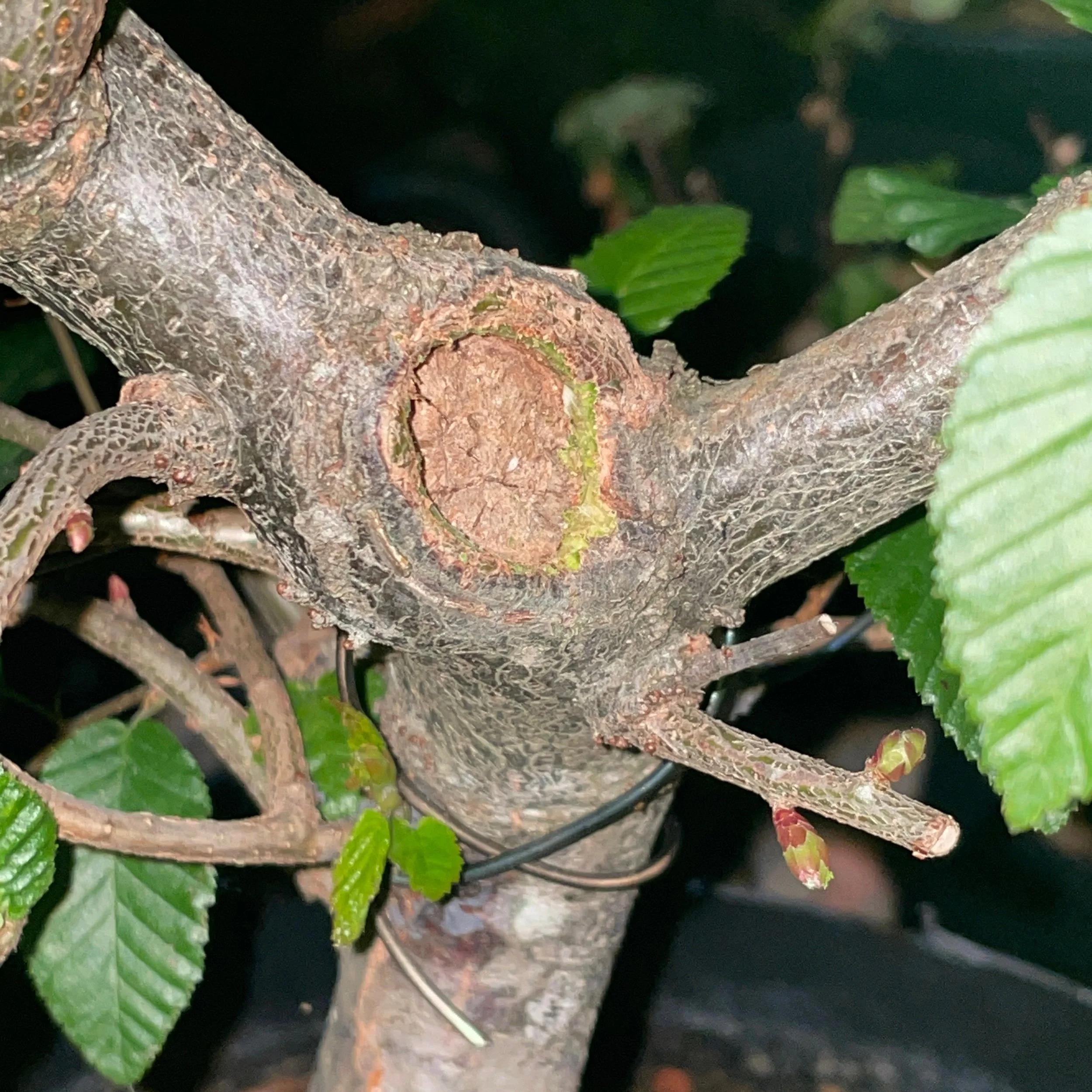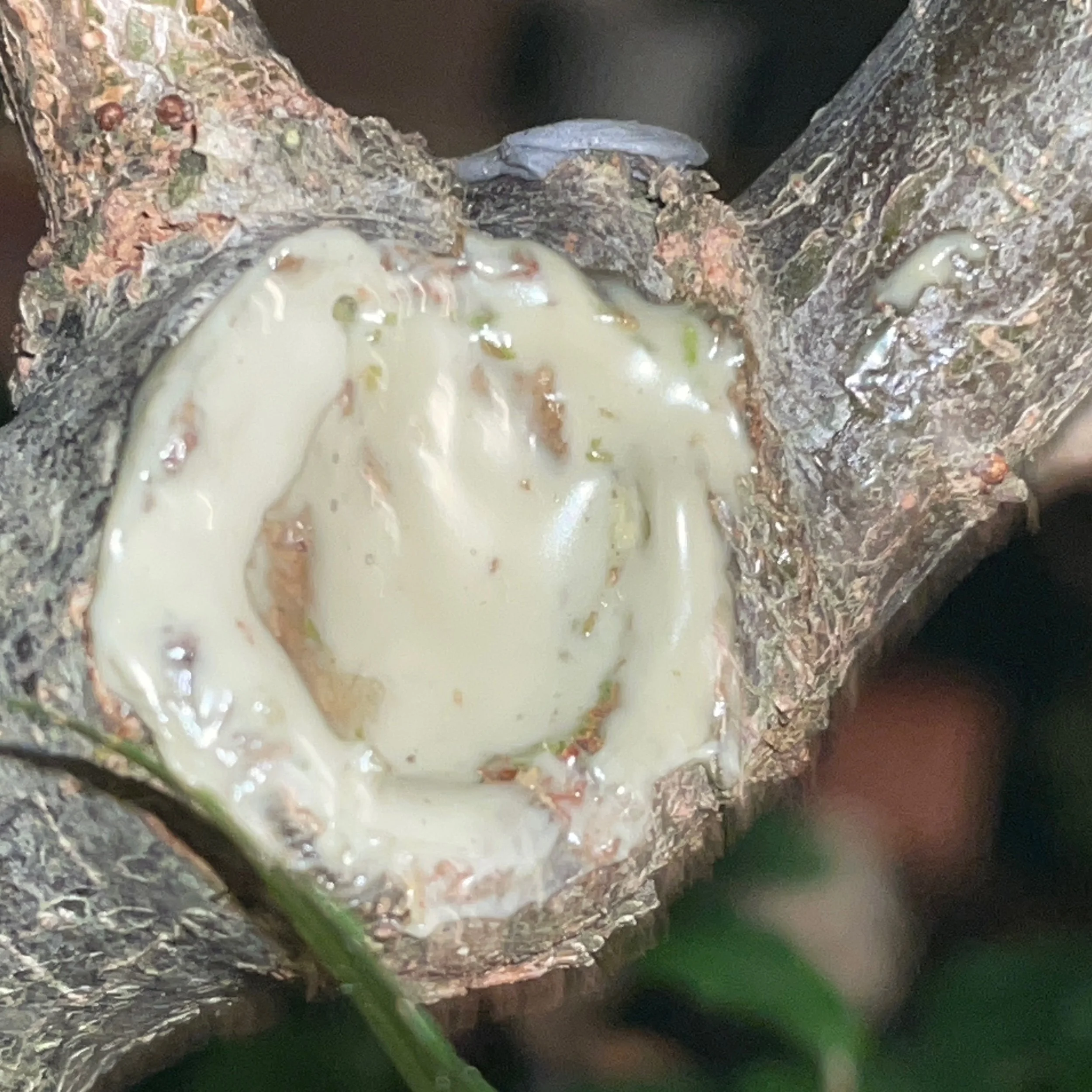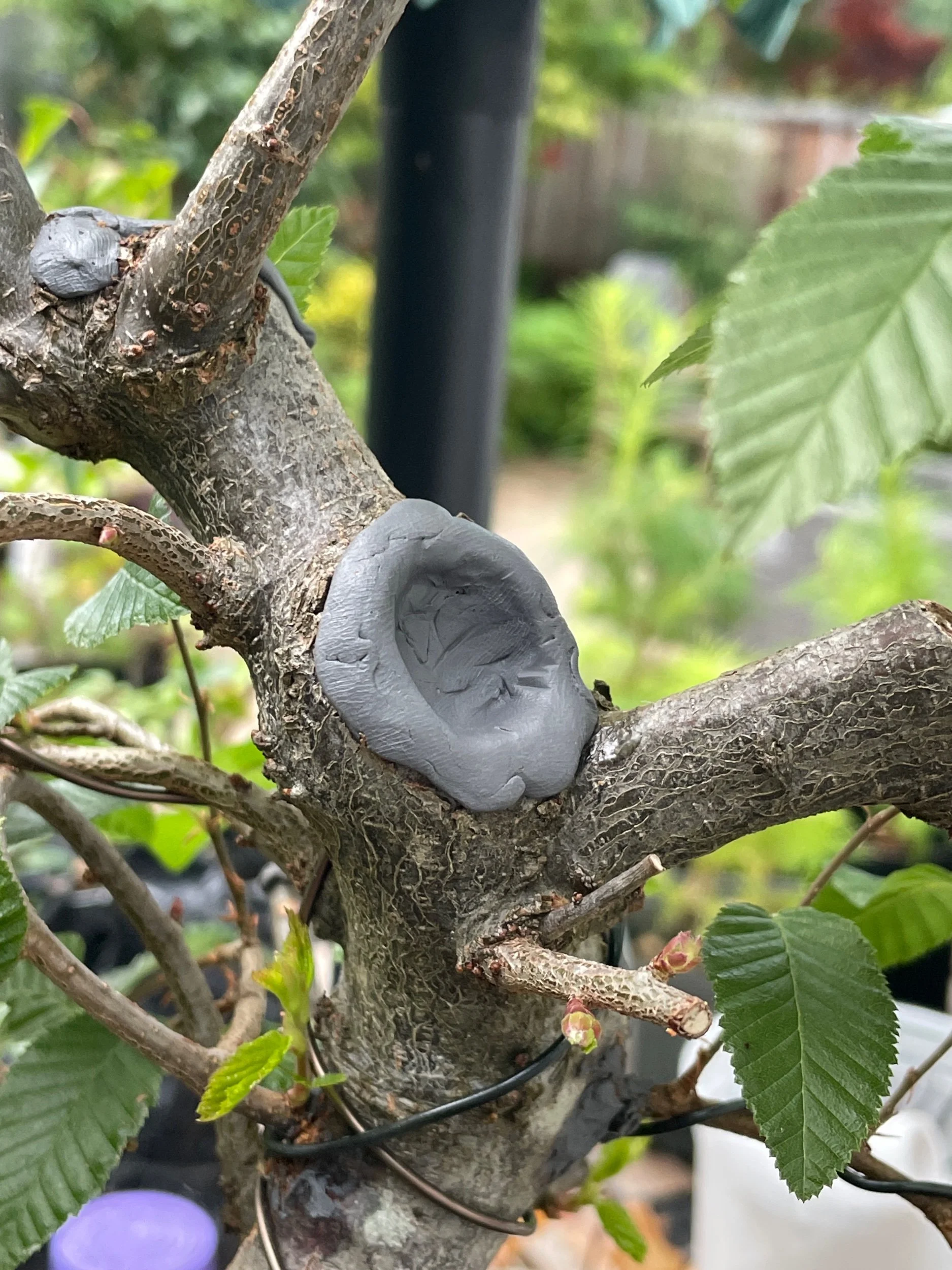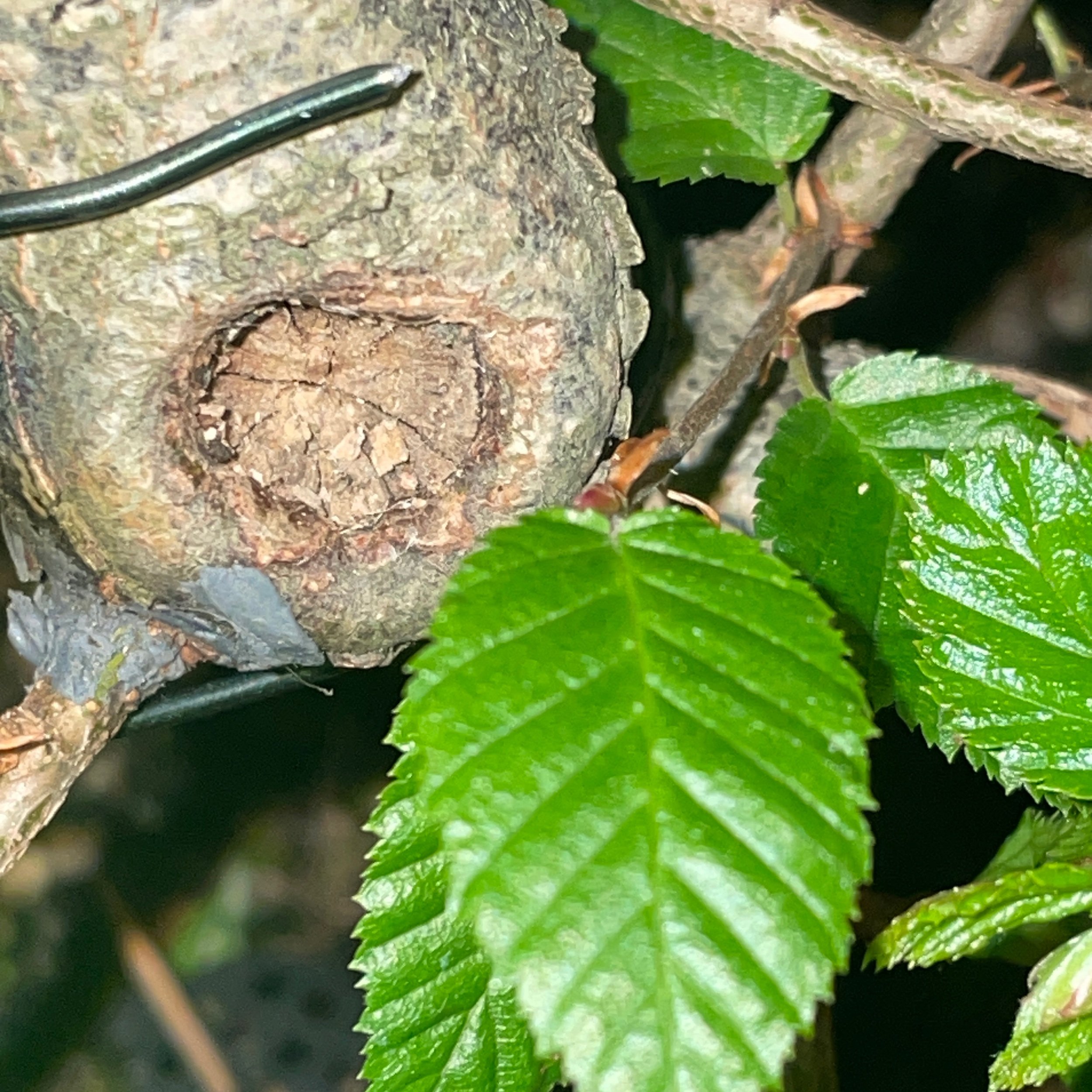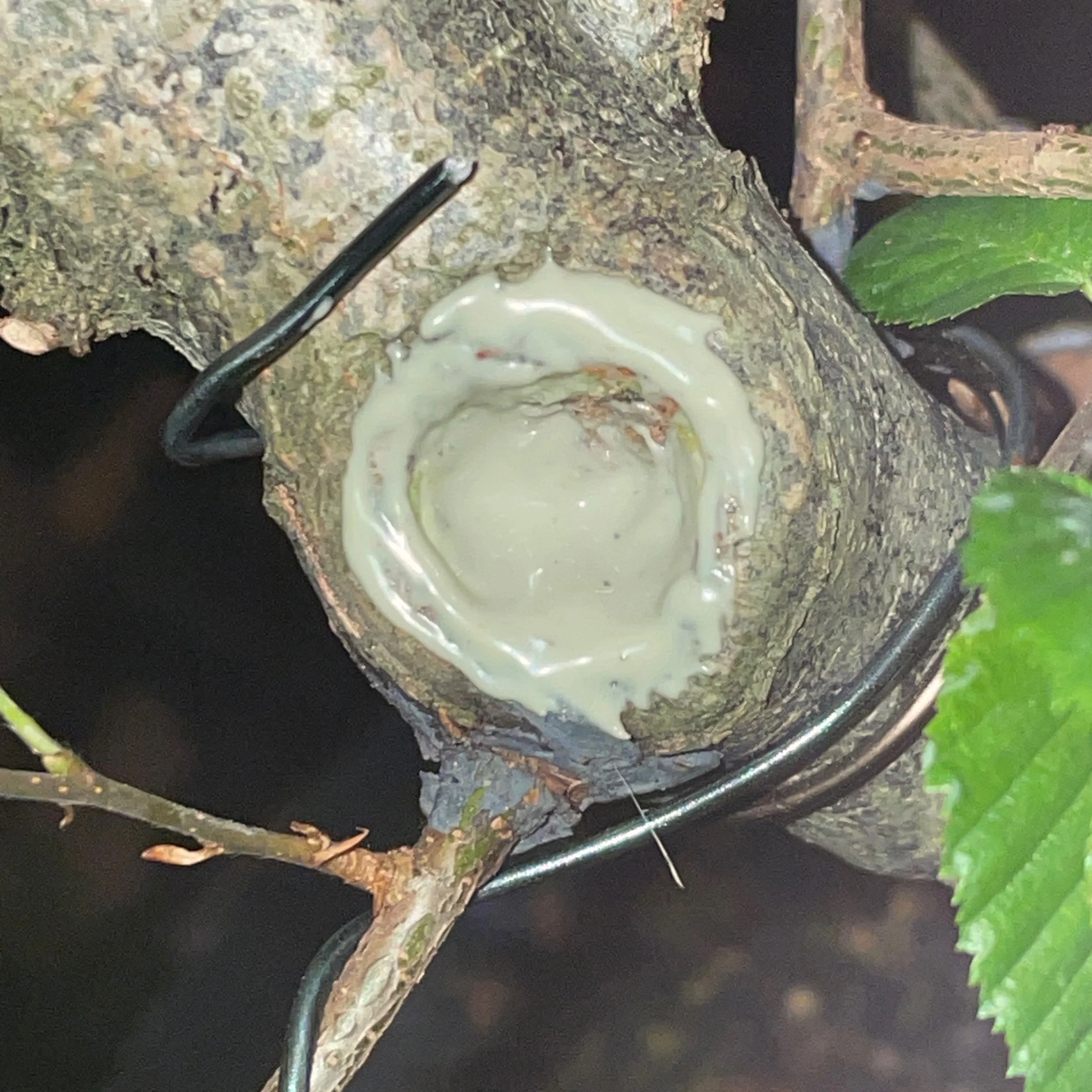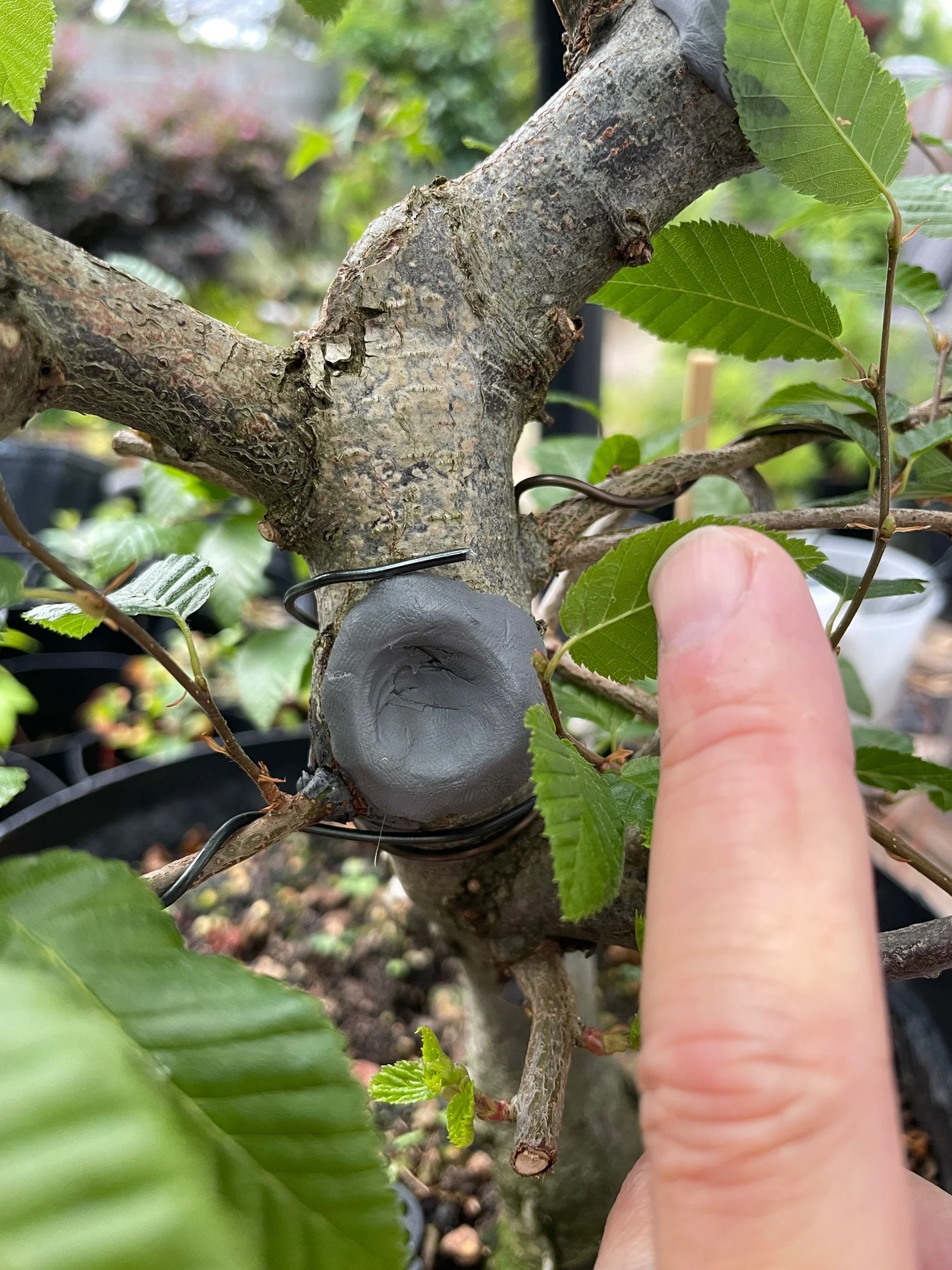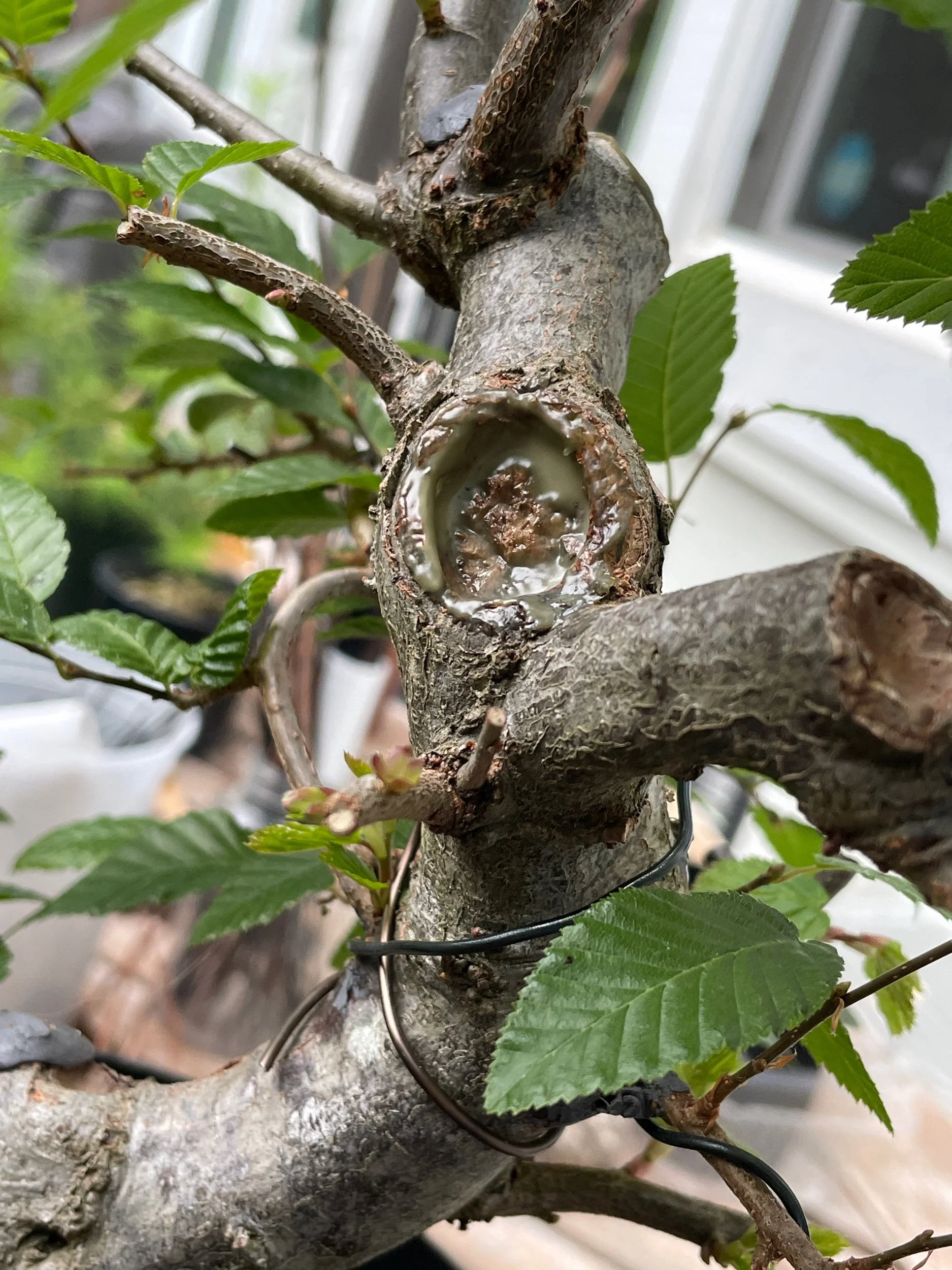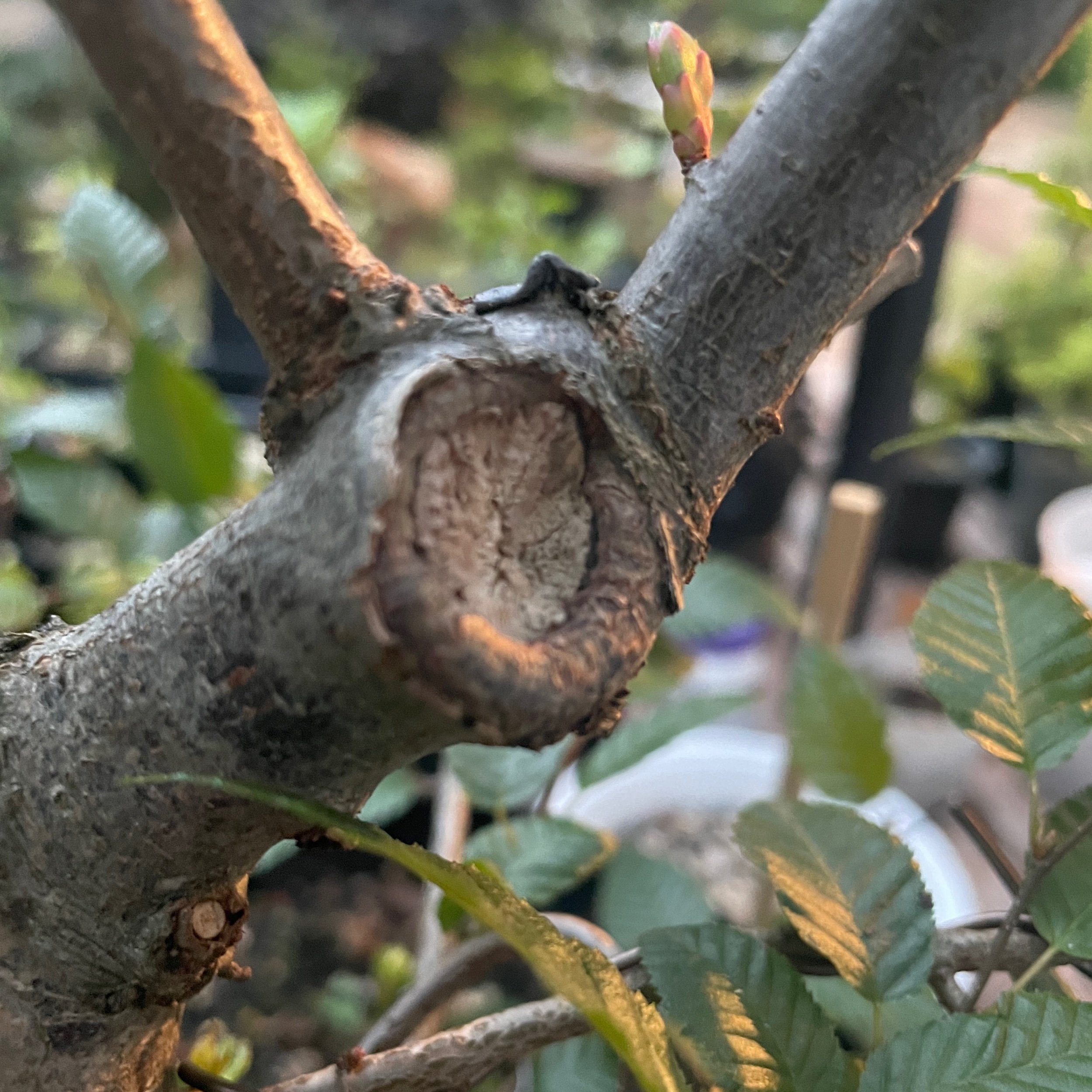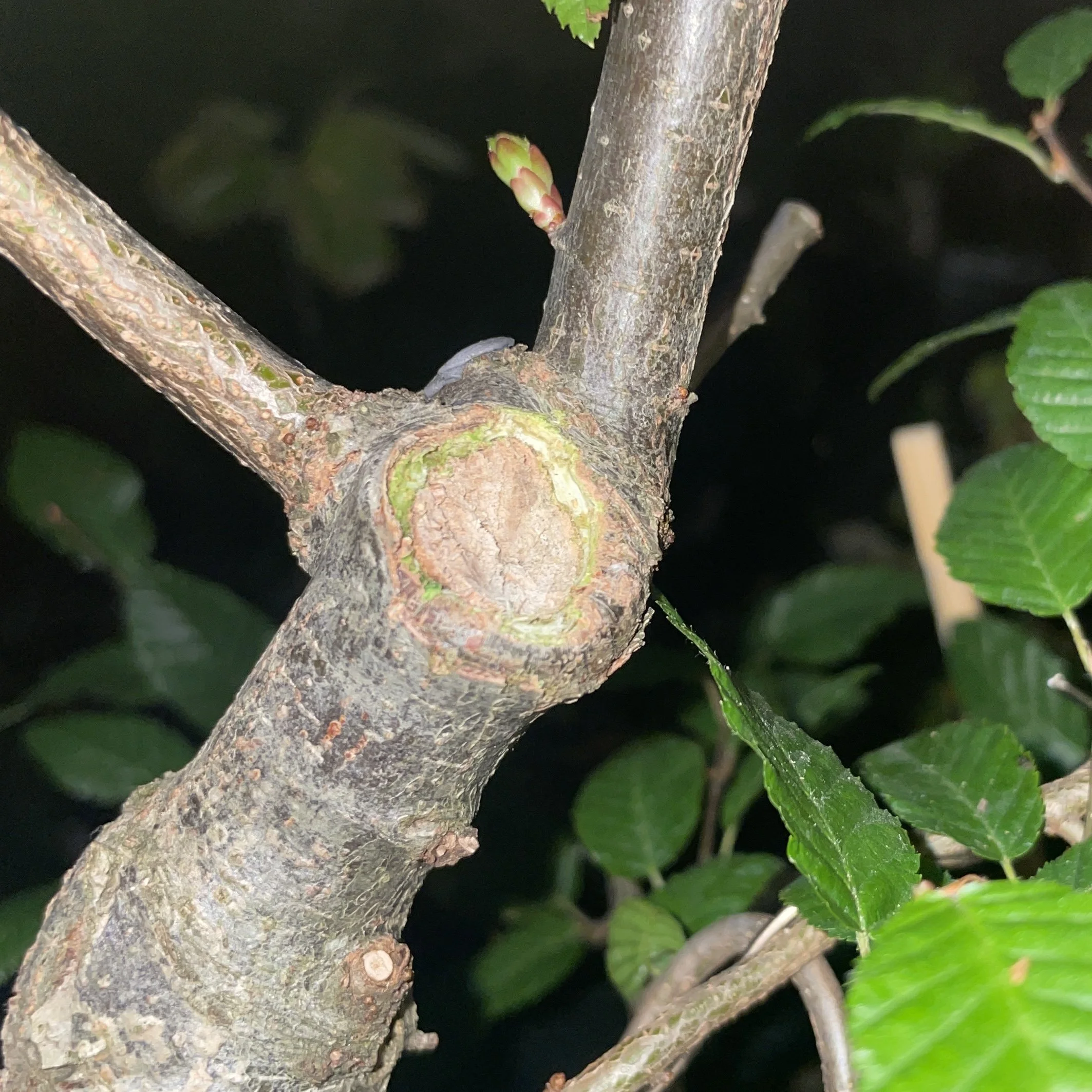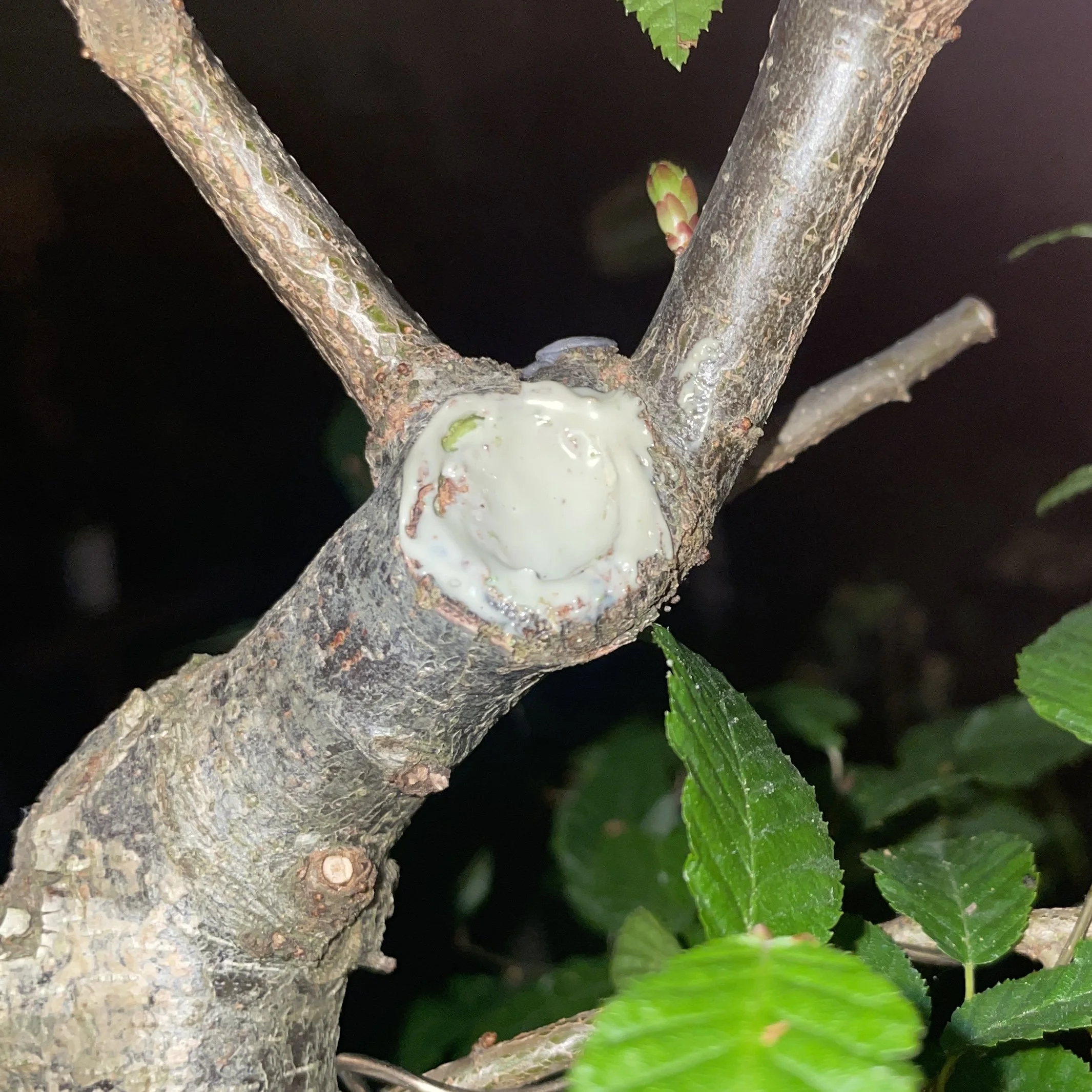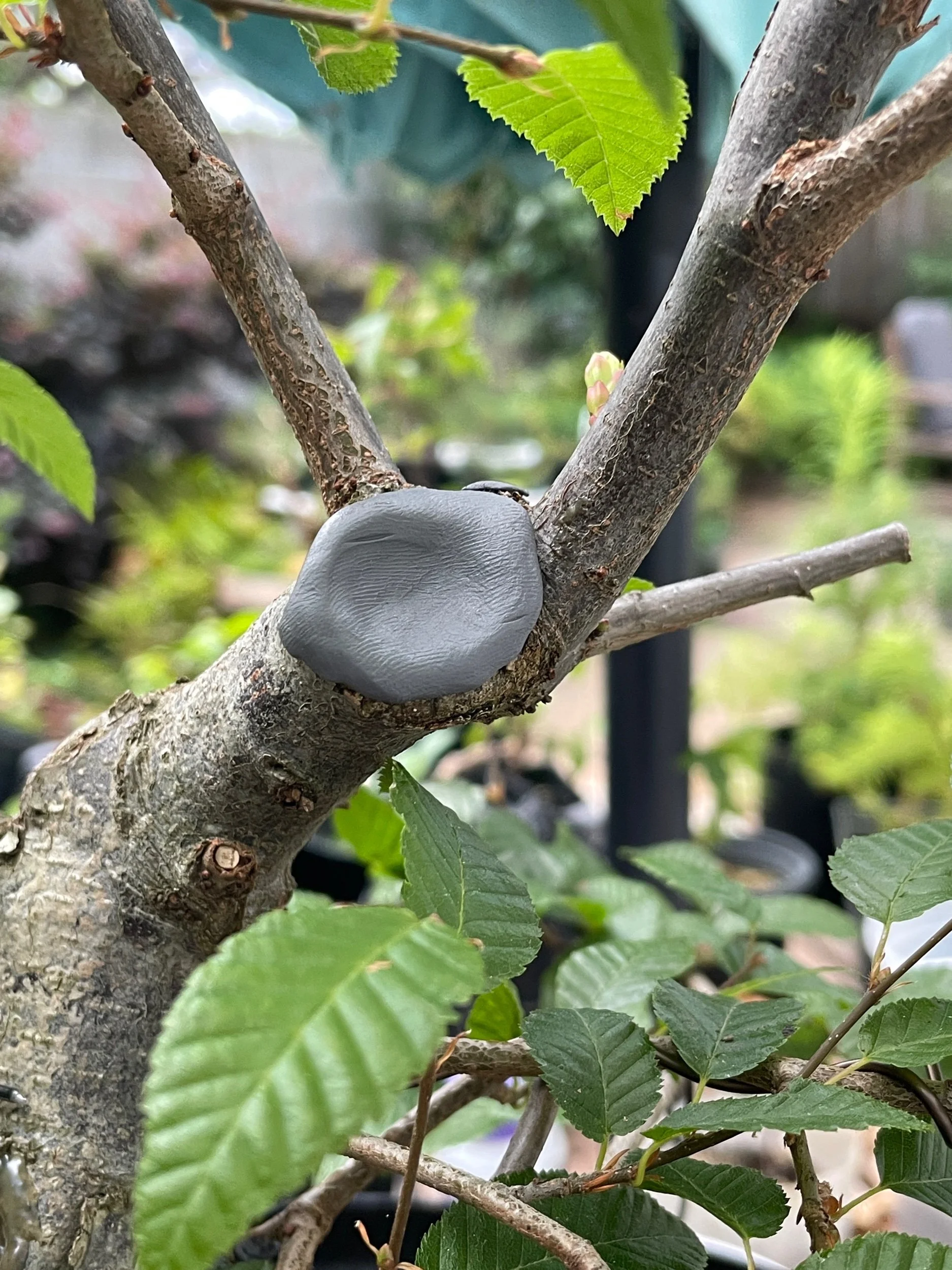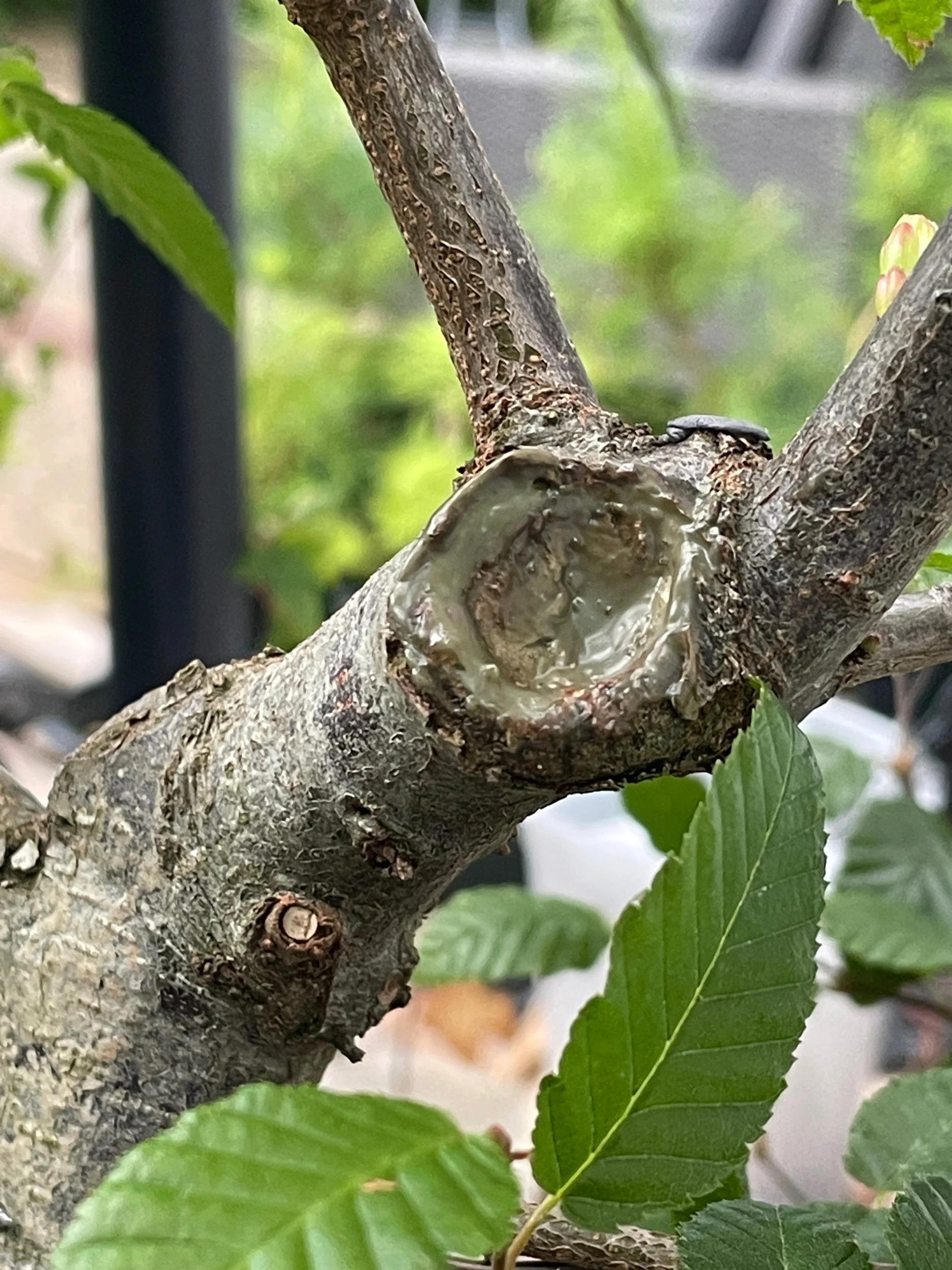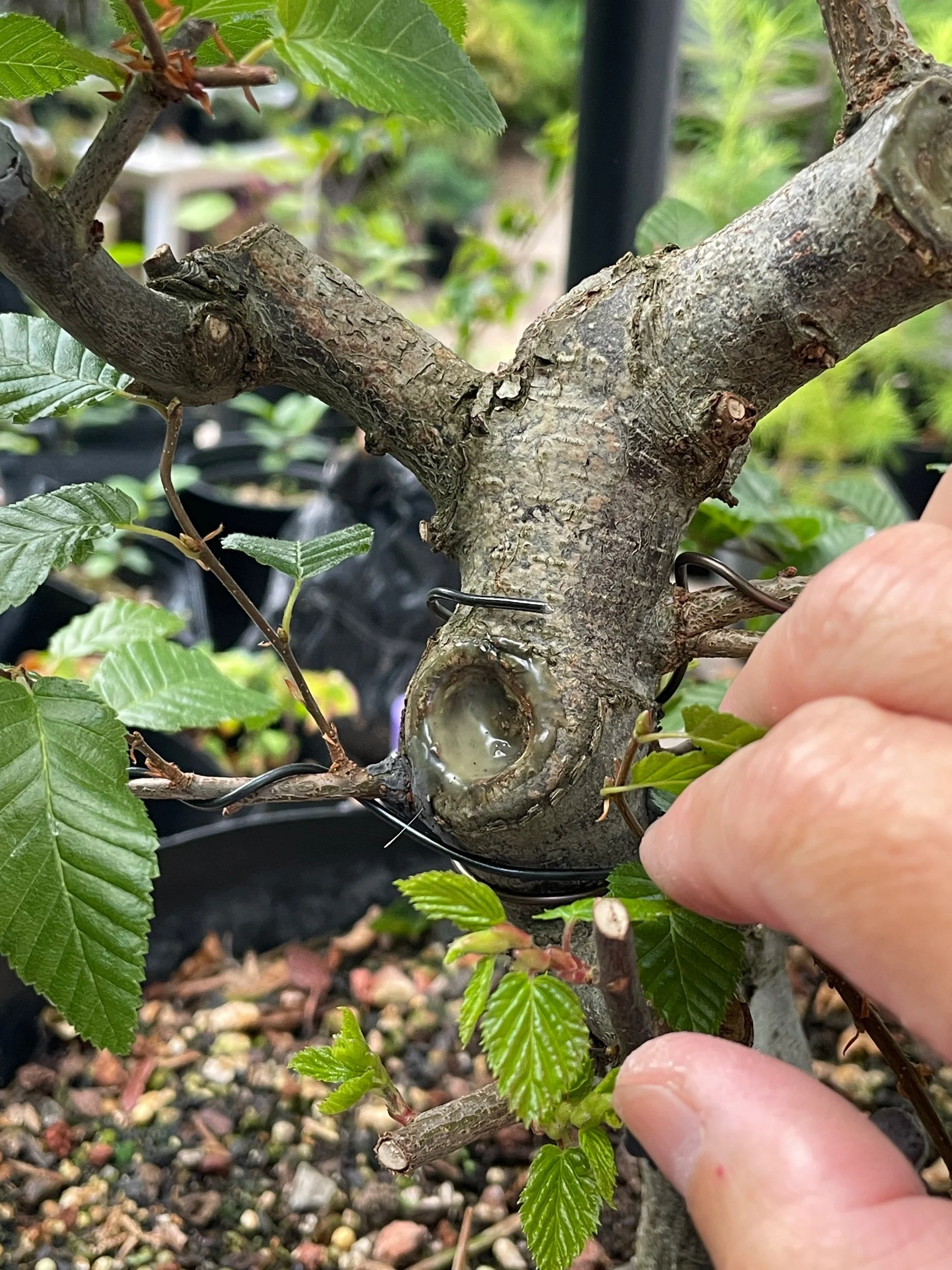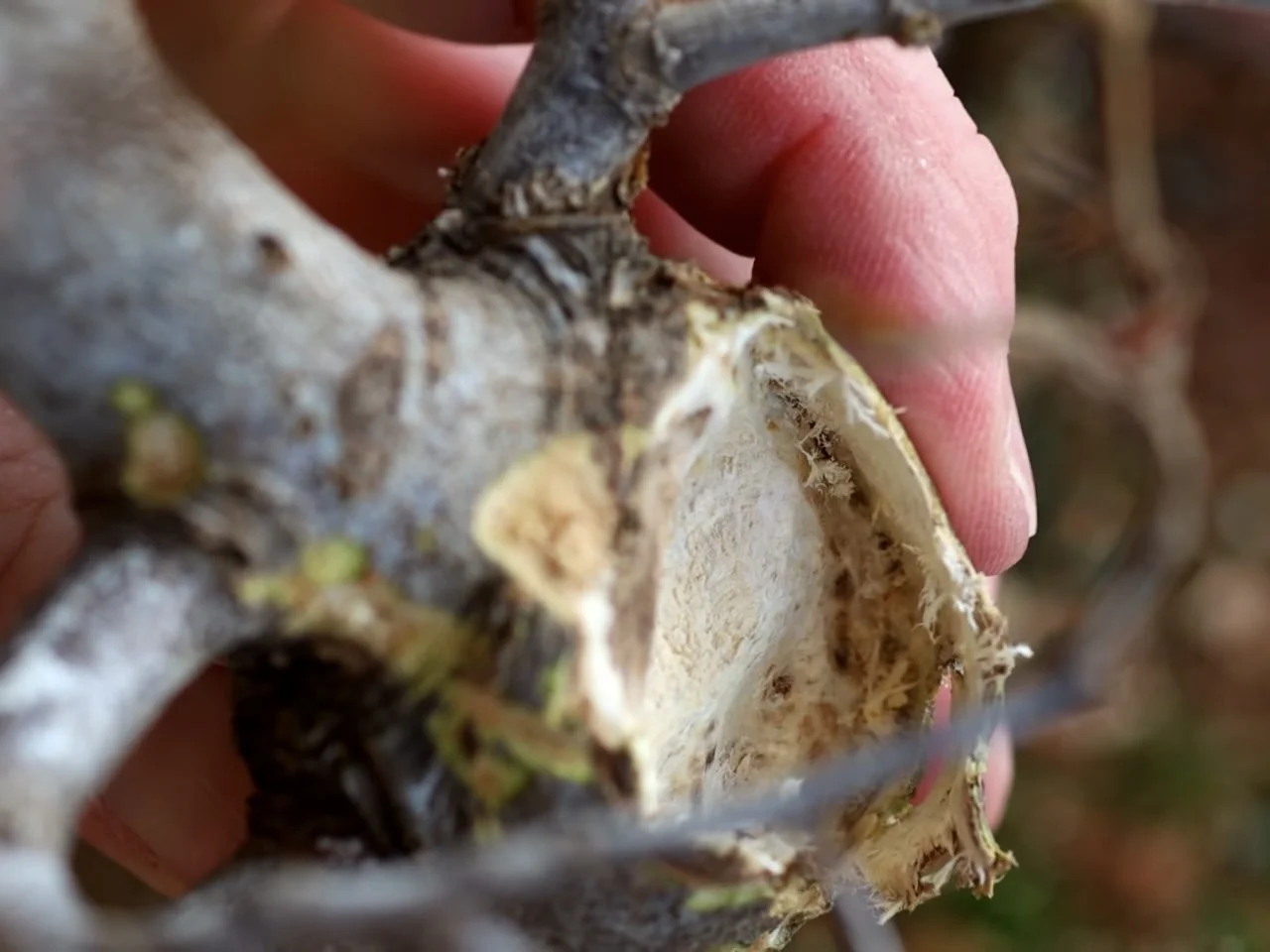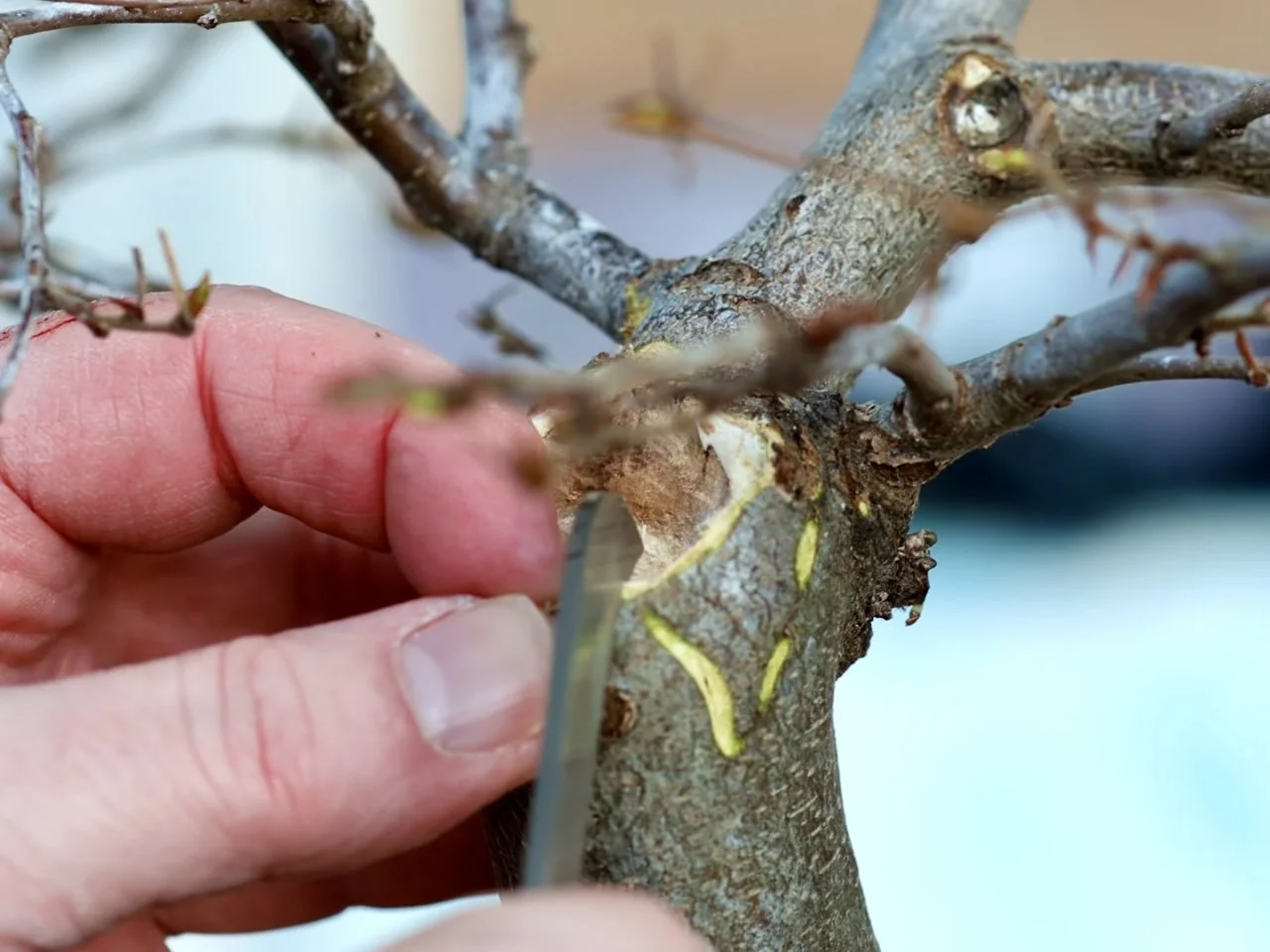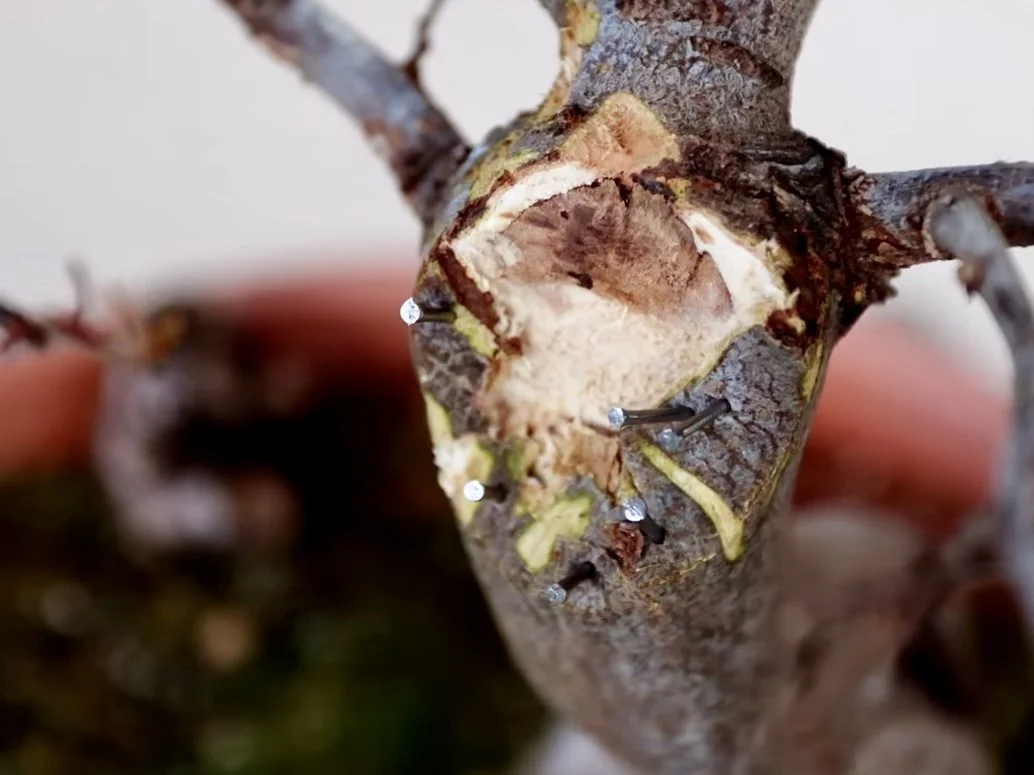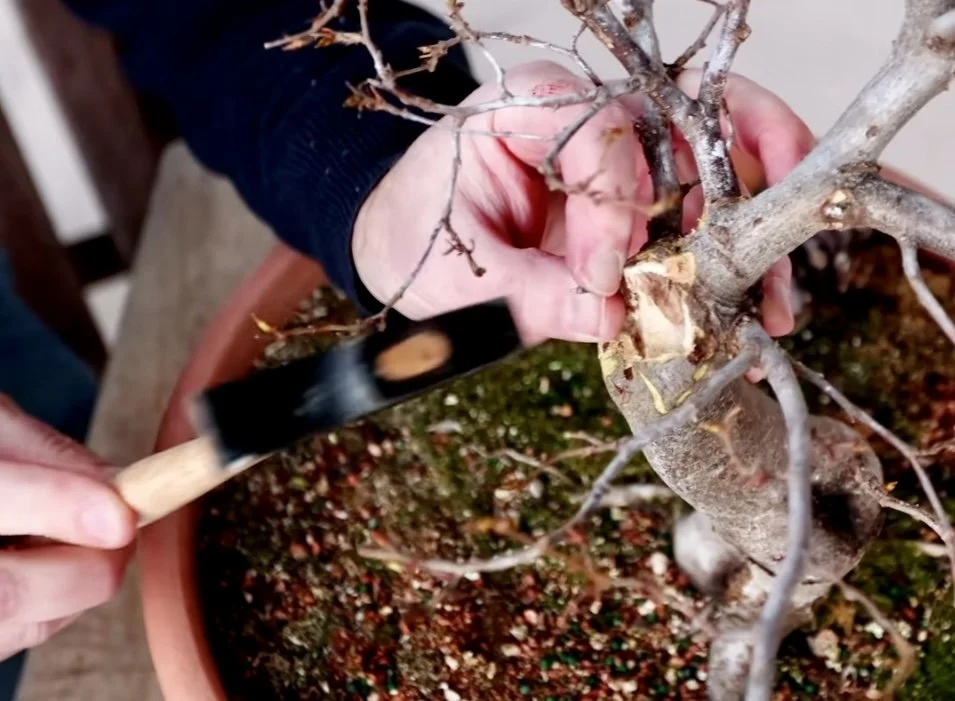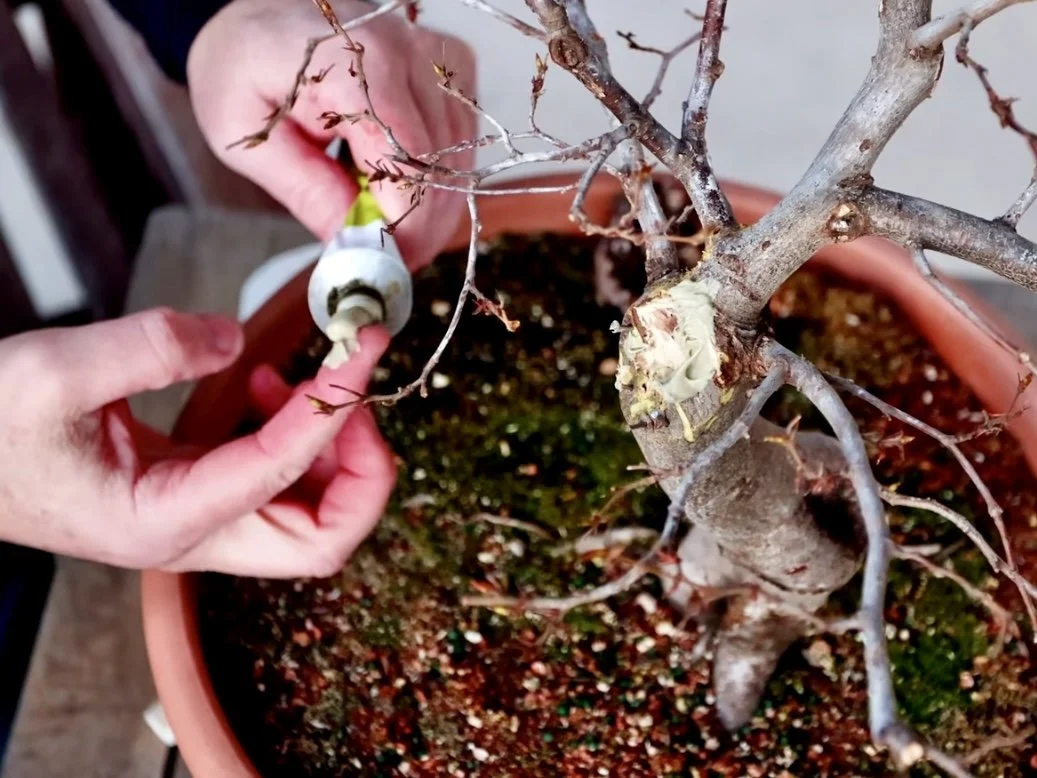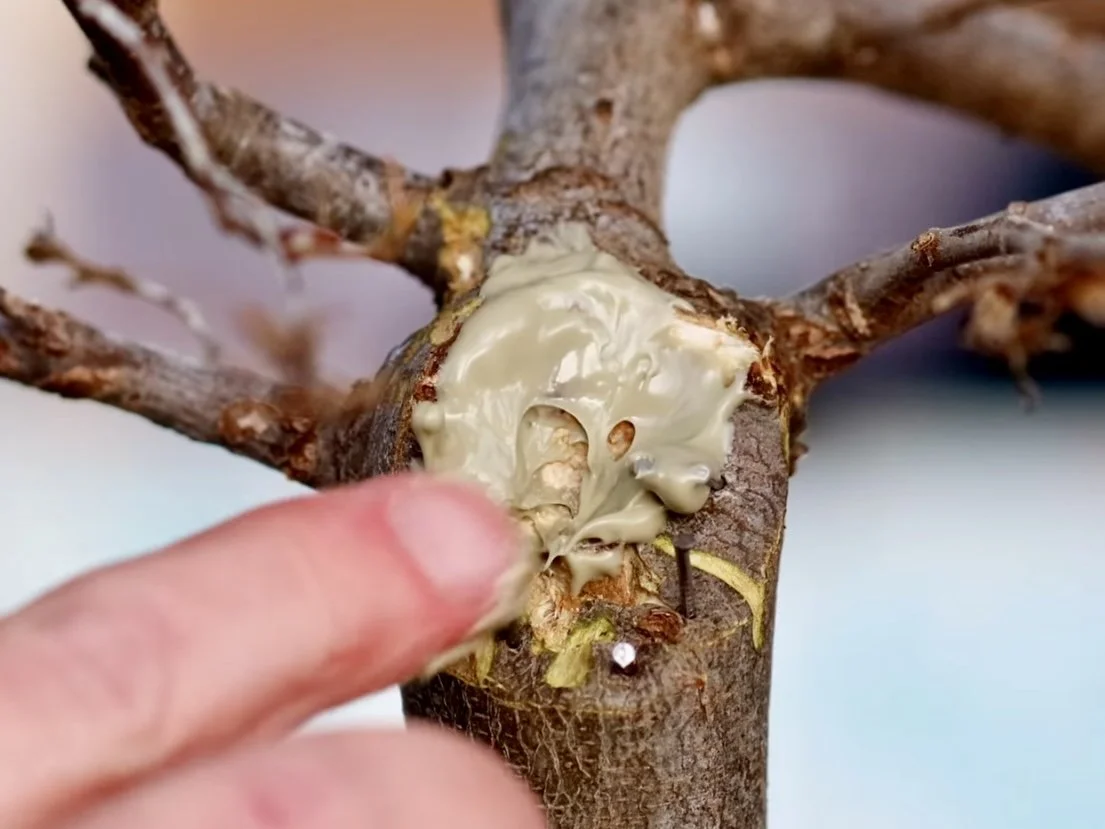Wound Management
When pruning or cutting branches greater than a pencil size is not protected by cut paste or putty, the absent cambium will not protect the heartwood and the cambium will callus around.
The basic method of closing up a wound is to make a clean smooth cut and use cut paste immediately after. The smooth surface helps the callus to slide over the xylem and the cut paste keeps the area moist and vital to help the tree form the initial callus tissue and start the process.
Shay cohen:
Bonsai dev - wounds over time
The callus may be thick and some cuts made concave to allow the callus to fill the void. Or if the cut back allows for some die back and followed by a flush cut followed by paste or putty—a thick callus May not be desired. Pruning or lost limbs is not unusual and it may be left as part of the character of the trunk—but the exposed heartwood may eventually rot or hollow the tree. Some may allow this to add character.
Regardless, if not desired and a callused ring is present, one can attempt to cover the heartwood by repeatedly allowing the callus ring to thicken across the heartwood until fully covered.
The area is brushed and cleaned
The inner edge of the callus is scared and trimmed to expose fresh cambium
Cut paste (tube) is used to cover the trimmed callus edge and the heartwood.
Followed by putty.
Allow to heal and examine under the putty after __ weeks.
Repeat as needed.
Notes on preventing or minimizing scars
Advice from SBBK Valerie Monroe
Should we leave a stub below a cut for die-back or cut flush?
…‘It depends’ is your most trusted advice!, but in a nutshell you will leave a stub if the cut is in the first year (or young) growth, and if you’re cutting back a more substantial branch to an area where there’s no new buds yet. This is to protect any buds that need to come out.
In the case of the pencil sized branch where you have a developed side shoot, you can cut and shape the wood flush so it heals cleanly.
The liquid cut paste goes on first then the putty. Found out that some of the liquids have a hormone to promote the healing process (I think Jonas’s site), but the tree will do it naturally if wound is clean and covered. I’ve had wounds heal with both liquid and putty and separate or in combination. Try several and you’ll see.
When using the putty apply it tightly to the surface. Not elegant but dig some out and push onto wound with a moist finger. It will stick to tree not your finger.
Purpose of putty is keeping out excess water but also air. Scar will form under the putty and you will see cracking where it’s taking place.
Advanced method: reduce woody volume and preserve cambium envelope, then fold cambium towards closing the wound. Wound sealant and tacking in placc may reduce the amount of surface area to fuse and cover.
Alternative sealant to allow cambium to heal underneath:
For very large surface area wounds, like chops, bonsai putty is used up quickly and over time cracks or fades if not applied thicker—aluminum foil tape has been suggested. More affordable, and possibly more resilient over time. Will start on more affordable projects with large chops & cuts. I am applying cut sealant first to encourage hormonal growth of bark. Experiment applied after 3rd week in April 2024.
Journal article by Alex Shigo, as made aware by Jonas Dupuich:
